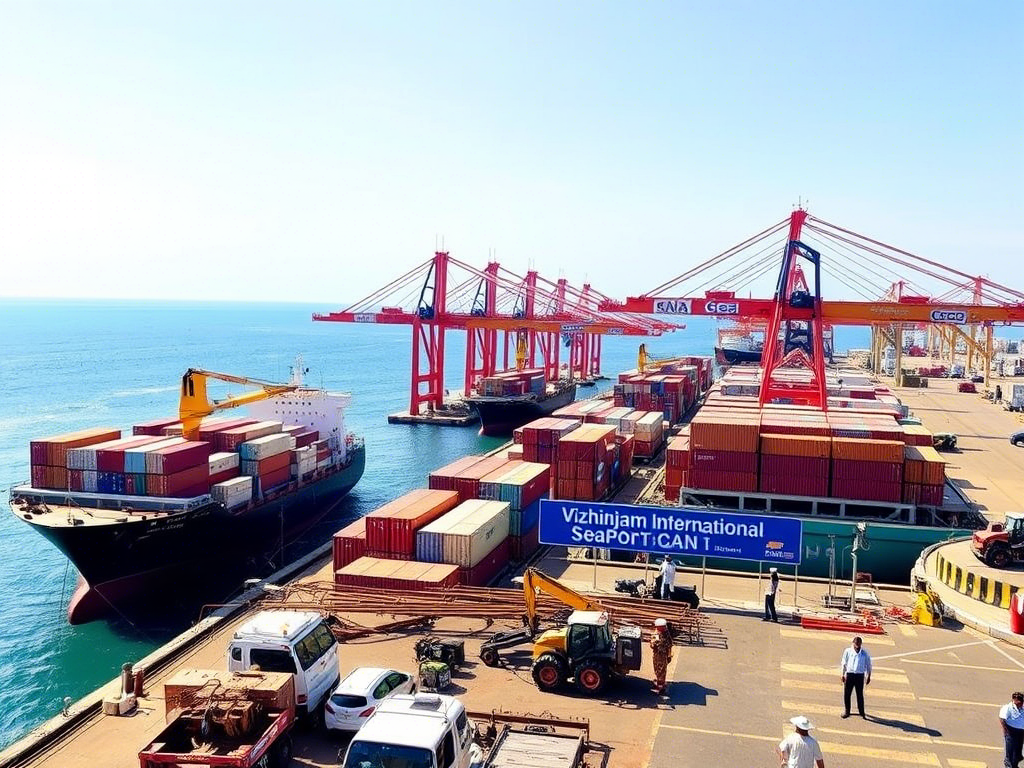Vizhinjam Port Inaugurated: Why This Kerala Gem Could Be India’s Game-Changer in Global Trade

"Not all revolutions come with a bang—some quietly dock at the shore."
Let me paint you a picture. Imagine standing on Kerala’s breezy coastline in Thiruvananthapuram, watching a giant container ship glide silently into one of the deepest ports in India. The sun’s dipping low, casting a golden hue over cranes, containers, and crews bustling with purpose. That, my friend, is the future—and it just arrived at Vizhinjam.
Now, I’m not usually the kind to geek out over ports (honestly, I still confuse port and starboard), but Vizhinjam International Seaport? This one’s different. It’s not just a local infrastructure upgrade—it’s a strategic pivot point for India's global trade dreams.
What’s the Big Deal About Vizhinjam?
Here’s the thing: India handles 95% of its trade by volume through the sea, yet we’ve long depended on ports in places like Colombo or Singapore for transshipment. That’s like owning a mansion but borrowing your neighbor’s kitchen to cook.
Enter Vizhinjam Port—India’s first deepwater transshipment hub, sitting just 10 nautical miles from one of the busiest global shipping routes. Translation? It’s prime real estate in the shipping world.
And it’s deep—over 20 meters deep, to be precise—which means it can handle ultra-large container ships like the MSC Türkiye that docked here recently. That’s not just a feather in our cap, it’s a whole peacock.
Numbers That Speak
Let’s talk money and impact—because ports aren’t just about cranes and containers, they’re about economic ripple effects.
- Project cost: ₹8,867 crore
- Developer: Adani Ports & SEZ Ltd.
- Ships docked during trial: 285+
- Jobs generated: Thousands (and counting)
Prime Minister Narendra Modi didn’t mince words during the inauguration. He called Vizhinjam a symbol of “new-age development” and said it would bring economic stability to Kerala and the nation. That’s a bold claim—but looking at the numbers, he’s not wrong.
So, What Makes Vizhinjam So Special?
Glad you asked. Because it’s not just another port—it’s the port India has been waiting for.
- Strategic Location
Close to the global east-west shipping corridor, Vizhinjam gives ships a quicker, cheaper turnaround.
- Deep Natural Draft
No need for constant dredging. That saves crores annually and makes operations more sustainable.
- Transshipment Hub
India no longer needs to depend on foreign ports for container transfers. That’s a game-changer for trade and national security.
Why This Matters to You
You might wonder—"Cool, but how does this affect me?" Great question.
If you’re a business owner, this could mean faster shipping and lower costs.
If you’re into tourism or hospitality, Vizhinjam’s growth will bring more footfall and investment to Kerala.
And if you're like me—a curious Indian who wants to see the country thrive—it’s another sign that we’re finally claiming our rightful space in the global logistics arena.
FAQ: Your Vizhinjam Port Questions Answered
Q1. Where is Vizhinjam Port located?
In Thiruvananthapuram, Kerala—just 10 nautical miles from the international shipping route.
Q2. Who built Vizhinjam Port?
It was developed by Adani Ports and Special Economic Zone Ltd. (APSEZ) in collaboration with the Kerala government.
Q3. What makes it different from other Indian ports?
It’s India’s first deepwater transshipment port, capable of handling the world’s largest ships.
Q4. When did it become operational?
Commercial clearance was given in December 2024, after a successful trial run earlier in July.
From Kerala to the World
You know, there’s something poetic about Vizhinjam. A once-quiet coastal town now becoming the anchor of India's maritime future. It reminds me that progress doesn't always roar—it sometimes rolls in on the tide.
Whether you’re a trader, traveler, or just someone who dreams big for India—this port is worth watching.


